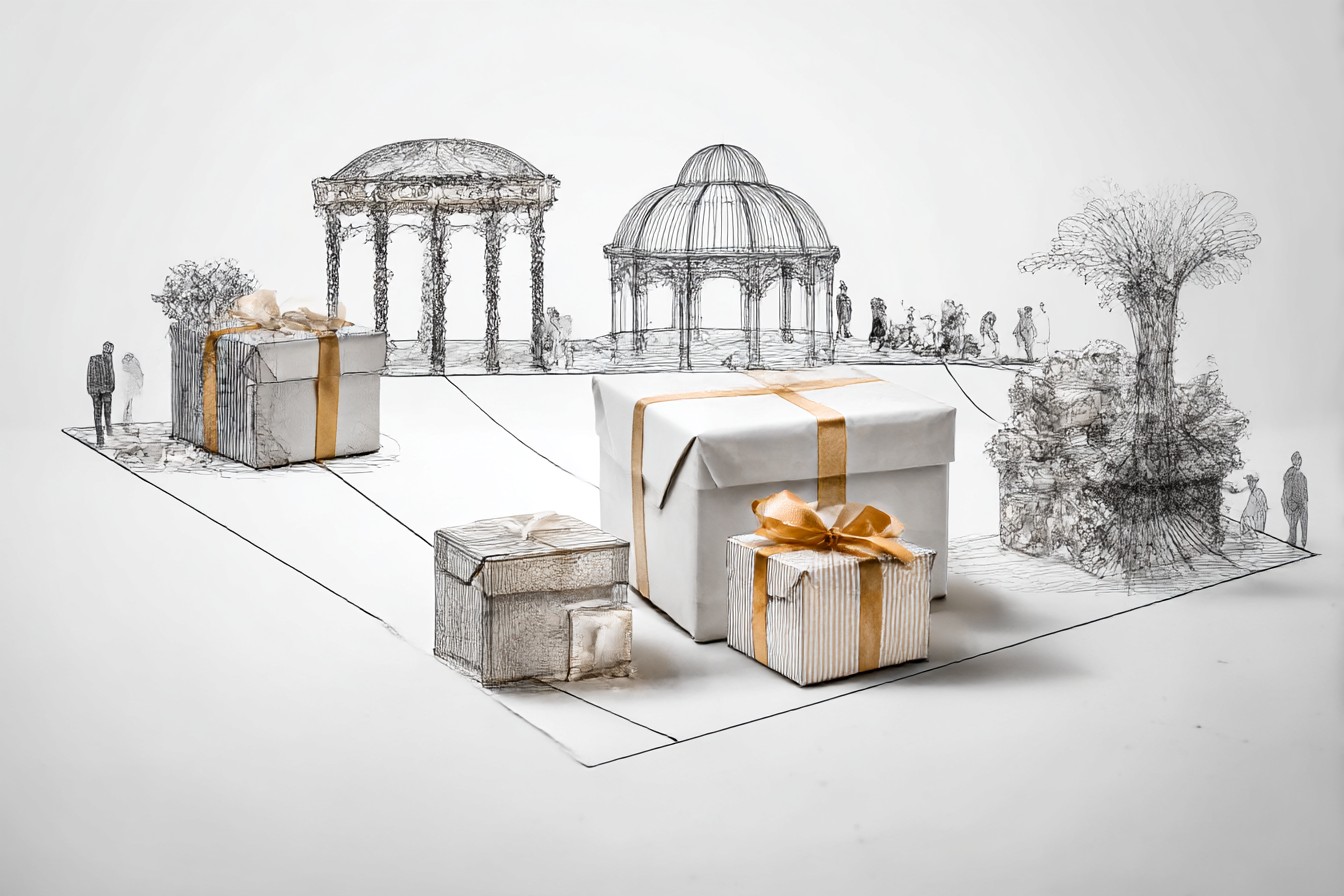I’ve always been a bit of a numbers gal when it comes to gift-giving, which usually surprises people. “But Olivia,” they’ll say, “I thought gift-giving was supposed to be this magical, spontaneous thing that comes from the heart!” Well, yes… and no. The heart part? Absolutely essential. But the spontaneous bit? That’s where we part ways.
Here’s my little confession: behind every thoughtful, seemingly effortless gift I’ve ever given is a borderline obsessive budget spreadsheet that would make my accountant brother-in-law weep with pride. I’m talking color-coded cells, formulas, and the occasional conditional formatting when I’m feeling particularly fancy. Jake once peeked over my shoulder while I was deep in “budget mode” and just whispered, “This explains so much about you.”
The thing is, I’m not made of money. Nobody is (except maybe Bezos, but I’m pretty sure he’s actually made of algorithms and space dreams). I work with a real, sometimes painfully finite gift budget, which means I have to make careful choices about where to splurge and where to pull back. And after years of refining this approach, I’ve developed some pretty strong opinions about where your gift money should go.
So let’s break down my gift budget philosophy, shall we? Fair warning: this might forever change how you think about that $50 scented candle you’ve been eyeing as your go-to hostess gift.
First things first – I allocate roughly 60% of my annual gift budget to what I call “cornerstone gifts.” These are the big ones for immediate family, closest friends, and my husband. The people who, let’s be honest, would still love me if I gave them a macaroni necklace, but deserve so much more. Christmas, birthdays, and anniversaries for this inner circle get the lion’s share of my gift resources.
Within that 60%, I spend most heavily on what I call “experience components” or “memory multipliers.” Last year, I spent nearly $300 on tickets to a pottery workshop for my mom’s birthday. Was that a lot? Yep. But here’s the thing – she’s been watching pottery videos on YouTube for months, sighing wistfully about “maybe trying it someday.” That $300 bought six weeks of classes, which turned into her joining a pottery club, which has now become this whole new social circle for her. Fifteen months later, she’s still talking about that gift.
Compare that to the $300 cashmere sweater I got her three years ago. It was lovely! She wore it… sometimes. But it didn’t create ongoing joy the way that experience did. That sweater is probably stuffed in the back of her closet now, but the pottery classes literally changed her weekly routine.
For my dad’s 65th birthday, I spent weeks tracking down actual fishing lures from the 1970s that matched the ones his father used to use. The lures themselves cost around $85 – not cheap, but not outrageous. The display case I had custom-made to hold them? That was another $175. Worth every penny when I saw his face. He keeps it in his office where he sees it every day, and it sparked all these new conversations with his fishing buddies about vintage gear.
Here’s where some people might think I’m a bit cold-hearted: I spend relatively little on packaging. Maybe 5% of my total gift budget goes to wrapping paper, gift bags, tissue paper, and ribbon. Don’t get me wrong – presentation matters! But I’ve found creative ways to make gifts look gorgeous without bleeding money on stuff that literally gets thrown away.
I keep a collection of fabric scraps, brown paper packages from online orders, and ribbon I’ve salvaged from gifts I’ve received. I’ve gotten pretty darn good at making a gift wrapped in repurposed brown paper with a sprig of rosemary from my kitchen and a length of twine look like something from a fancy boutique. My sister-in-law Amy once asked me where I bought my “artisanal gift wrap.” I didn’t have the heart to tell her it was the paper bag her brother brought home from the liquor store.
Oh, and gift cards? I have… thoughts. I don’t hate them categorically – they have their place in a balanced gift diet. But I refuse to pay those ridiculous $4.95 “activation fees” for the privilege of turning my $50 into a $50 gift card. That’s literally burning money! If I’m going the gift card route, I buy them from places that offer bonuses (like those “buy $50, get $10 free” restaurant promotions during the holidays) or from warehouse clubs where you can get them at a discount.
Now, where do I intentionally save? Group gifts, distant relatives, and what I call “obligation gifts” – you know, the white elephant exchange at work, the hostess gift for your neighbor’s annual holiday party, the birthday gift for your husband’s boss’s kid. These get about 25% of my total budget, and I’m ruthlessly efficient with this category.
This is where my famous “gift closet” comes into play. Throughout the year, I keep an eagle eye out for sales on universally appealing items. Beautiful blank journals when they’re 70% off at the bookstore. Really nice candles when that fancy boutique downtown has their semi-annual clearance. Attractive serving pieces when HomeGoods gets in a good shipment. I stash these away, carefully cataloged in my gift inventory spreadsheet (yes, that’s a real thing I maintain, and no, I won’t be taking questions about that level of organization).
Having this stash means I’m never paying full price in a panic. When my cousin suddenly announces she’s having a baby shower in two weeks, I’m not racing to buy whatever overpriced item is left on the registry. I can check my gift closet inventory and see that I have a gorgeous baby blanket I got for 60% off during an end-of-season sale.
I save aggressively on cards. The markup on greeting cards is BANANAS. Seven dollars for a piece of cardstock with a generic message someone else wrote? Hard pass. I bought a pack of 50 high-quality blank cards with envelopes on sale for $12 three years ago. I add my own messages, sometimes with a little doodle or a photo I’ve printed out. People keep these cards way longer than the pre-printed ones because they’re actually personal.
Another area where I refuse to overspend: novelty gifts that are funny for exactly 30 seconds. You know the ones – the wine glass that says “Mommy’s Sippy Cup” or the socks with tacos on them. They get a laugh when opened and then immediately get relegated to the back of a drawer. I’d rather put that $15 toward something the person will actually use or enjoy beyond the initial unwrapping.
The final 15% of my budget goes to what I call “emotional rescue gifts.” These aren’t tied to specific occasions – they’re the ones you give when someone gets bad news, has a rough week, or achieves something they’ve been working toward forever. Having this buffer built into my annual gift budget means I can send flowers to my friend who didn’t get the job she wanted without feeling like I’m derailing my financial plan.
I’ve found that these unexpected gifts often mean more than the ones people see coming. The care package I sent my college roommate Dana when she was studying for the bar exam (complete with her favorite snacks, foot masks, and a ridiculous amount of Post-it notes) still gets mentioned years later. “I was at my absolute lowest point,” she told me, “and then this box of exactly what I needed appeared like you’d been reading my mind.”
That’s the thing about gifts – sometimes the most meaningful ones aren’t tied to how much you spend, but to how well you’ve been paying attention.
There’s another budget category I haven’t mentioned yet: time. This is the most valuable resource of all, and I’m deliberate about where I invest it. I’ll happily spend hours researching the perfect significant gift for someone special, but I won’t burn an entire Saturday going to six different stores looking for a white elephant gift for the office party. That’s just poor resource allocation.
Some people might think this systematic approach takes the magic out of gift-giving. I couldn’t disagree more. Having a clear budget and strategy actually frees me up to be more creative and thoughtful. I’m not making panicked last-minute decisions or blowing my budget on something mediocre because I’m out of time. I’m making intentional choices about where my gift dollars will create the most joy.
Last Christmas, Jake and I set a strict $100 limit for each other’s gifts. He bought me a gorgeous leather-bound journal that I’d been eyeing for months (and that I know for a fact cost $95). I spent $42 on supplies to recreate our first date – the same takeout from the same restaurant, the same wine, even tracking down the exact movie we watched – and then another $58 on a custom star map showing the night sky on the day we met. Both gifts were within budget, but focused on very different types of value.
The older I get, the more I realize that memorable gifting isn’t about unlimited funds – it’s about intentional allocation of limited ones. It’s about deciding that your sister deserves the absolutely perfect thing that costs a bit more, while your cousin will be perfectly happy with something lovely but less specialized from your gift closet stash.
And you know what? Nobody needs to know which gifts broke the bank and which ones were strategic steals. That’s between you, your budget spreadsheet, and that slightly suspicious-looking gift closet that definitely doesn’t contain presents for people who haven’t even been born yet.
Ok, fine – there might be a small section in there labeled “future nieces/nephews.” But I got those baby books at 75% off during a publisher’s clearance sale, and they’ll keep forever. And that, my friends, is exactly the kind of budget-conscious gift planning that lets me be generous year-round without eating ramen for dinner in January.
So next time you’re staring down a gift-giving occasion feeling that familiar budget panic, remember: it’s not about spending the most money – it’s about spending your money where it matters most. The rest is just wrapping paper.



